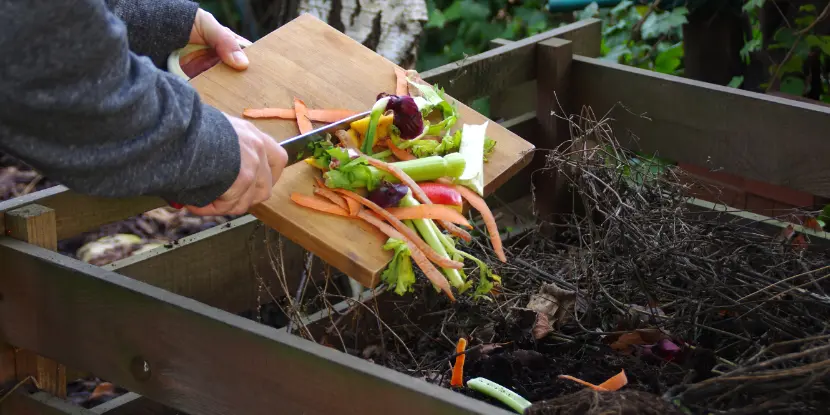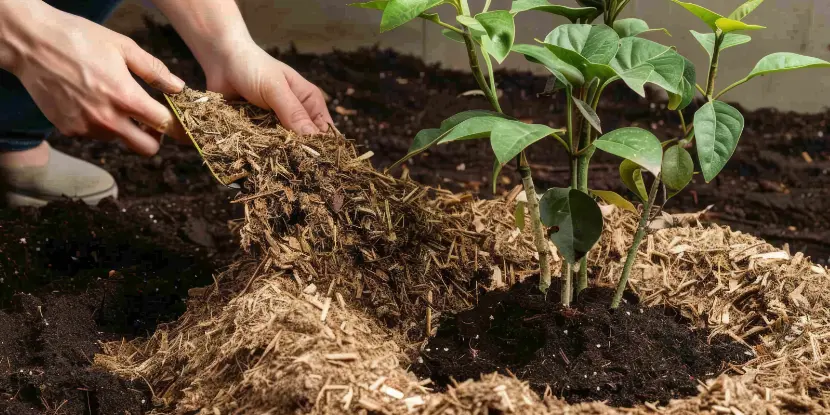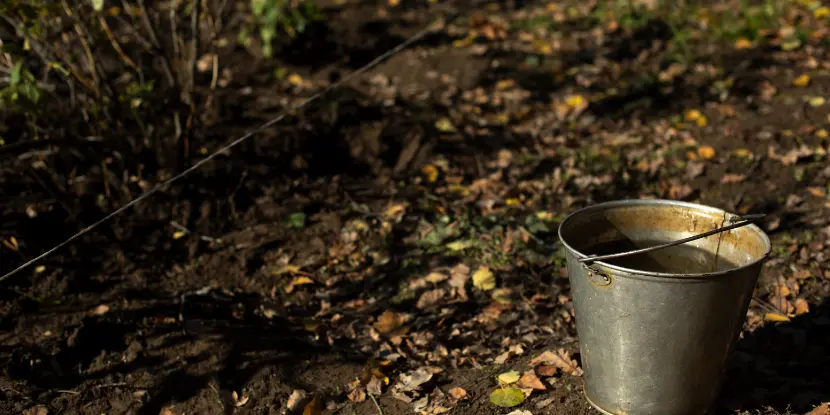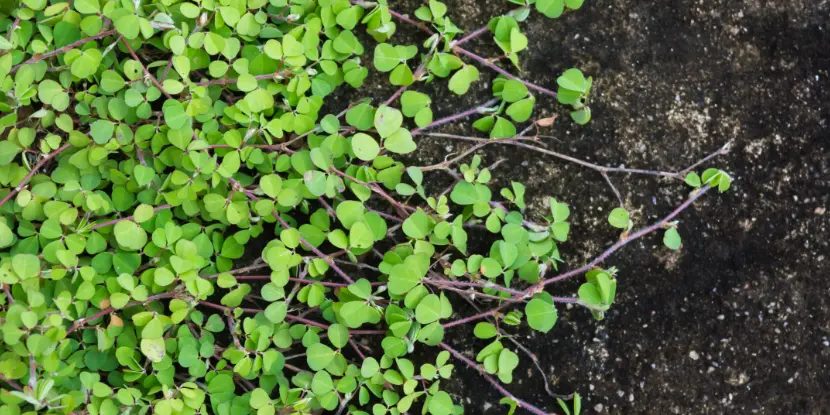Randy Ritchie hosted an amazing class about building healthy soil in an organic garden. Here’s a quick recap for those who couldn’t make it.
Randy started off with something incredibly blunt, but incredibly honest:
“I don’t care about the health of your plants. I care about the health of your soil.”
If you’re a gardener, you might think he just insulted your children, but you can’t have healthy plants without healthy soil. So, to help you grow robust plants, Randy described the ways to build healthy soil in an organic garden.
Compost
If you’ve made compost, and it’s finished, that’s wonderful! Then use it. If it’s still breaking down, then maybe you’ll want to turn it and let it finish the composting process.
Putting out or using unfinished compost is a drag on the soil, as it takes up energy and biology from the soil to break it down. With a finished compost, you should be able to put down 1/2″ to an 1″ of compost over the entire garden, then water it in if you don’t have rain in the forecast. I always use the best organic compost,
Bu’s Blend Biodynamic Compost, from Malibu Compost: It’s farm-made, True Organic, Biodynamic and Non-GMO, plus it’s one hundred percent finished and screened for maximum efficiency in the soil.

Organic kitchen scraps can go straight to the compost bin.
Mulch with Your Shredded Leaf Litter
If you have a bunch of leaf litter and dry branches like we do, then fall is the time to take healthy, non-diseased litter and run it through a shredder. We have a small plug-in, electric one that is fantastic for this job. It creates buckets and buckets of fresh mulch. This is perfect to put down over 1/2″-1″ of compost that you just spread in the garden.
In the spring, when it’s time to compost again, just throw the compost on top of any leftover mulch and water it all in.

Mulch helps retain moisture, suppress weeds, and enrich the soil.
Compost Tea
This is a great way to add biology, microbes, to the soil as another food source or biological building block that will help breakdown organic matter in your garden through mineralization over time.
Mineralization is the process that grow plants worldwide. It is what happens when bacteria and fungi break down organic matter and release the nutrients that are locked inside for the plants to uptake.
I recommend making compost tea as an extract, versus an actively aerated compost tea. It’s as simple as dropping a tea bag into water! I use the compost teas that come in a four pack, or “coffee sleeve” from Malibu Compost. They have 5 different types of compost tea for your entire garden.
You drop the organic cotton muslin tea bag into 5 gallons of water and let it soak overnight, roughly 8–10 hours, then give it a squeeze and put it into your watering can or 1/2 gallon sprayer to use for a foliar spray.
If you’re going to do a tea drench, then you can pour it directly into the soil below your plants from the 5 gallon bucket. If you’re going to apply as a foliar with a sprayer, remember that the sprayer must be clean because you’re applying microbes, which could be harmed or killed in an unclean sprayer. Using compost tea extractions is so easy and such a quick clean-up, I cannot recommend this highly enough for all gardens and gardeners of varying degrees of experience.

Compost tea can be applied by drenching roots.
Cover Crop
Everybody always says to plant a cover crop. The reality is that a lot of us gardeners just never get around to it. It’s so easy and effective. For many, the cover crop seems unsightly to the fastidious and tidy gardener, but the reality is that once you have that living green mulch that is doing so much for the health of your garden, you’ll get over it.
Cover crops are fantastic, natural and true organic ways to fix nitrogen in the soil, build organic matter, fix nitrogen, suppress weeds and help with compaction and erosion. We’re big on clovers in our garden: crimson clover, white clover and medium red are all excellent cover crops as well as hairy vetch!
For more info on cover crops, check out one of my favorite places: High Mowing Seeds.

Clover is an excellent cover crop.
Microbial Inoculation
One of the other things that I love to do that not many gardeners do is to look at everything from a biological perspective.
I’m a biological farmer, gardener and grower. To me, it’s all about the microbes, and the more beneficial biology in the soil, the better.
One of the things that I like to do is to occasionally give my soil a nice drenching of EM-1 from TeraGanix. EM-1 is a natural, organic probiotic for the soil and much more. Adding it to the soil helps with soil structure and drainage, as well as adds even more diversity to the soil. It is also a great biological inoculant that will promote plant and soil health in your garden.
FAQs: Organic Soil Health
Q: What’s the importance of building healthy soil in an organic garden?
Healthy soil provides essential nutrients to plants, supports soil microorganisms, and improves water retention, leading to healthier and more productive plants.
Q: How can I test the health of my soil?
Use a soil test kit to measure pH, nutrient levels, and organic matter content. You can also observe the soil for earthworms and other beneficial organisms, which indicate good soil health.
Q: What are some organic methods to improve soil fertility?
Methods to improve soil fertility include adding compost, using green manure crops, applying organic fertilizers, and incorporating cover crops.
Q: How often should I add compost to my garden?
At least once a year, usually in the spring or fall. However, the frequency can vary depending on your specific soil needs and garden conditions.
Q: What’s the role of mulch in soil health?
Mulch helps maintain soil moisture, regulate soil temperature, and reduce weed growth. It also breaks down over time, adding organic matter and nutrients to the soil.
Q: Can I use kitchen scraps in my compost?
Kitchen scraps like vegetable peelings, coffee grounds, and eggshells are excellent compost additions. Avoid adding meat, dairy, and oily foods, which can attract pests and create unpleasant odors.
Q: What are cover crops, and how do they benefit the soil?
Cover crops, also known as green manure, are plants grown specifically to benefit the soil. They help prevent erosion, improve soil structure, add organic matter, and fix nitrogen in the soil, enhancing fertility. Examples include legumes, grasses, and clover.
Q: What are the benefits of crop rotation for soil health?
Crop rotation is a crucial practice for maintaining healthy soil. It helps prevent nutrient depletion and disease build-up while promoting biodiversity and soil structure. Rotating crops also allows different plants to draw nutrients from different depths in the soil, reducing the need for fertilizer.
Q: How do earthworms contribute to soil health?
Earthworms aerate the soil, improve drainage, and break down organic matter, making nutrients more available to plants. Their castings are also rich in nutrients and beneficial microorganisms.
Q: How can I manage soil pH organically?
You can add lime to raise pH or sulfur to lower it. Always test your soil pH before making adjustments and follow recommended application rates.
Q: What are some signs of healthy soil?
Signs include a rich, dark color, a crumbly texture, a pleasant earthy smell, and the presence of earthworms and other soil organisms.
Q: How can I avoid soil compaction in my garden?
Avoid walking on garden beds, especially when the soil is wet. Use raised beds or designated paths, and incorporate organic matter regularly to improve soil structure.

